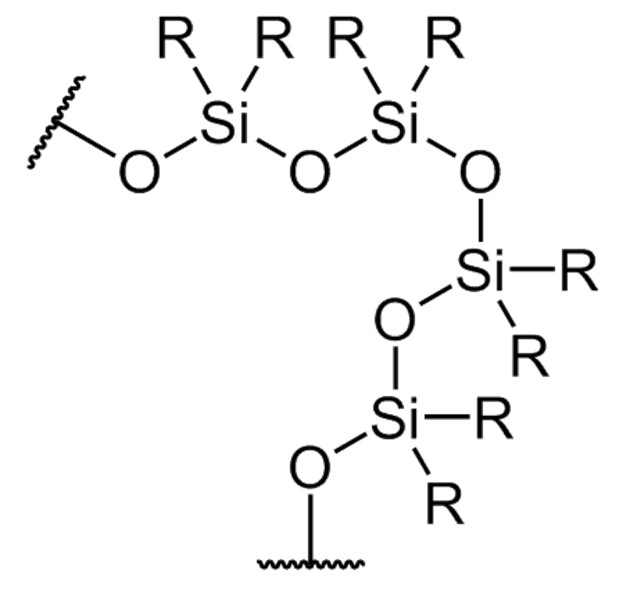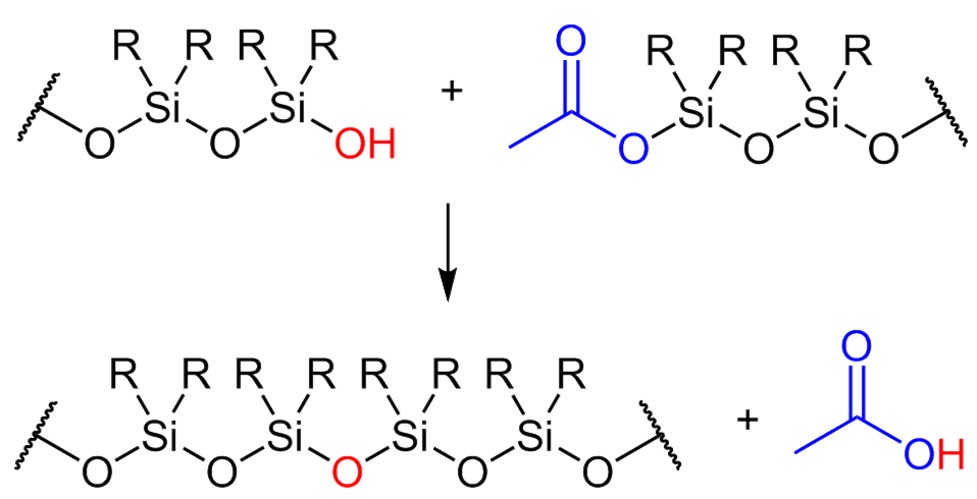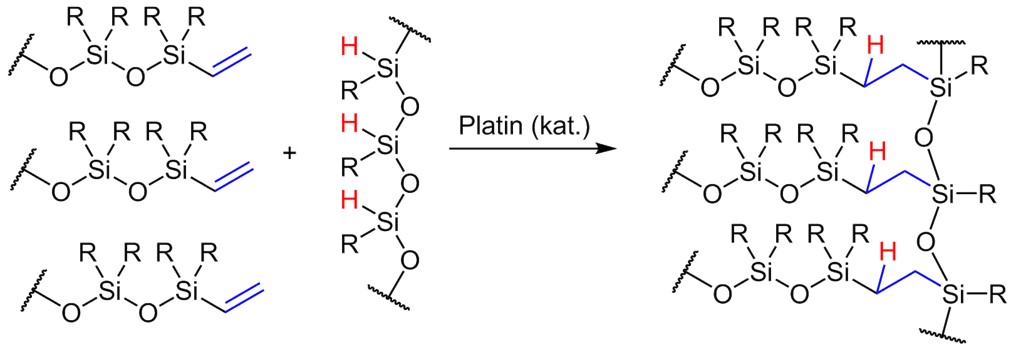Addition curing silicones
The addition mechanism for 2K silicones requires two components and uses a platinum catalyst for the addition reaction between functionalized oligosiloxanes. These systems are favoured for electronics applications as there is no moisture ingress due to the shrinkage-free curing.
In these 2-component systems, the A component usually consists of a vinyl-functionalised oligosiloxane and the hardener consists of a hydrogen-functionalised oligosiloxane and the platinum catalyst. The addition reaction of the functional groups of the two oligosiloxane units connects them during curing by means of an ethylene bridge, creating a polymer network (Figure 3).
The reaction rate can be specifically adjusted by the concentration of the platinum catalyst and the addition of certain inhibitors. Due to the low concentration (ppm range) of the platinum catalyst, care must be taken to ensure that no catalyst poisons such as heavy metal, sulphur or nitrogen compounds are present as impurities on the component to be cast or the tools used. Catalyst poisons deactivate the catalyst even in the smallest quantities and thus prevent optimum curing of the material.
This can also occur on surfaces to be cast in where the silicone has cured properly as a compound but remains sticky at the interface (e.g. solder joints) because a catalyst poison has formed at this point.
1c silicones
1-component silicones have reactive end groups and cure through the addition of atmospheric moisture in a condensation reaction, releasing the end group to the product. The use of 1K silicones is limited to low layer thicknesses, as moisture is only transported by diffusion. In addition, the curing speed is highly dependent on external conditions such as temperature and humidity.
The classic system in this context is an acetoxy RTV-1-K silicone. This system contains acetoxy groups as reactive end groups on the oligosiloxane units (see Figure 2), which are partially hydrolysed during the curing process with the release of acetic acid. In a second step, the hydroxyl groups react with further acetoxy groups, whereby a silicon-oxygen bond is formed and acetic acid is split off again. This creates the polymer network of the end product.
Due to the permanent formation of acetic acid, the products have a typical vinegar odour. Fillers, such as calcite, can be used to bind the acetic acid and significantly reduce the odour. They are unsuitable for corrosion-sensitive surfaces or electronic components, as the added moisture could penetrate easily due to the low cross-linking density. One-component silicones are therefore not suitable for applications where moisture is completely undesirable.
Systems with an alkoxy/amino group as the reactive end group are also used. In this system, an alcohol or an amine is split off in the course of the reaction, which is why the use of this reactive group is declining for toxic reasons.




